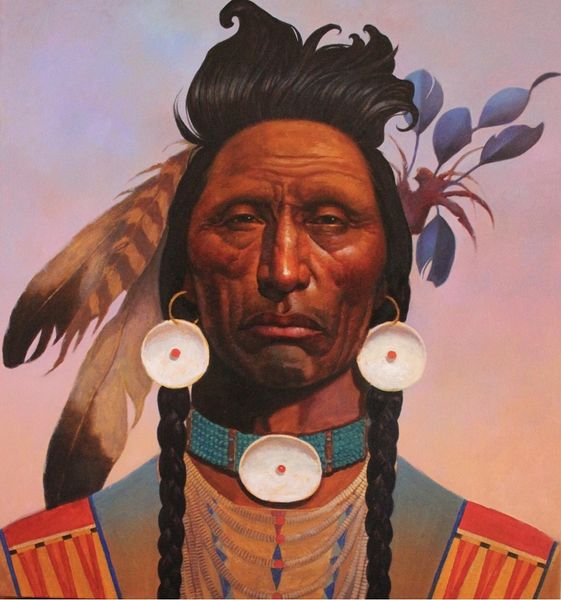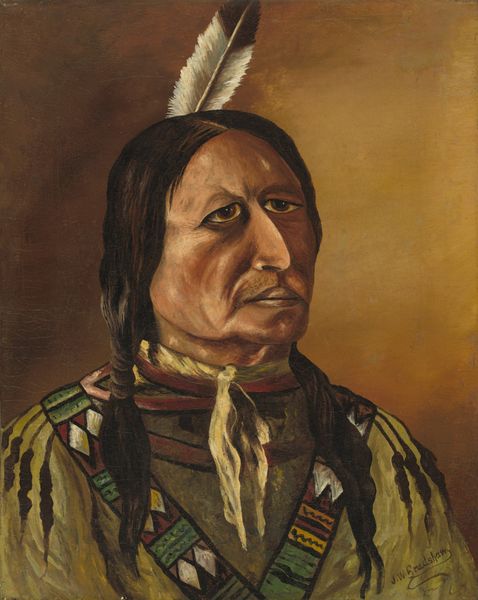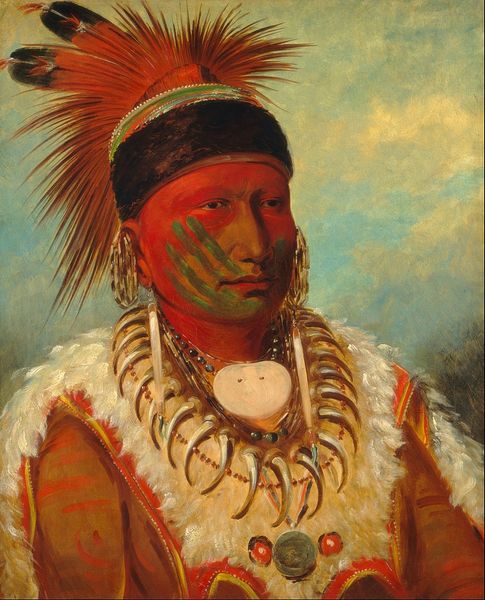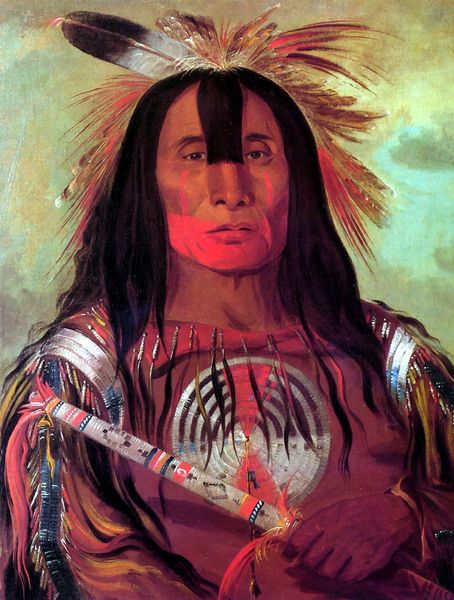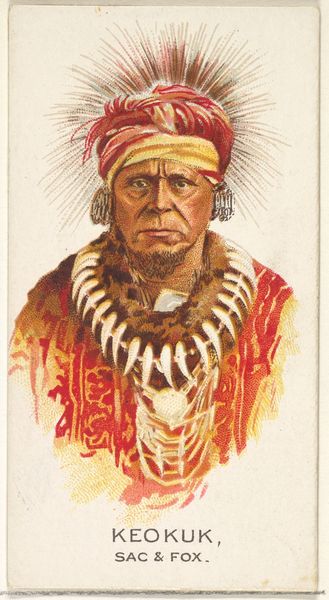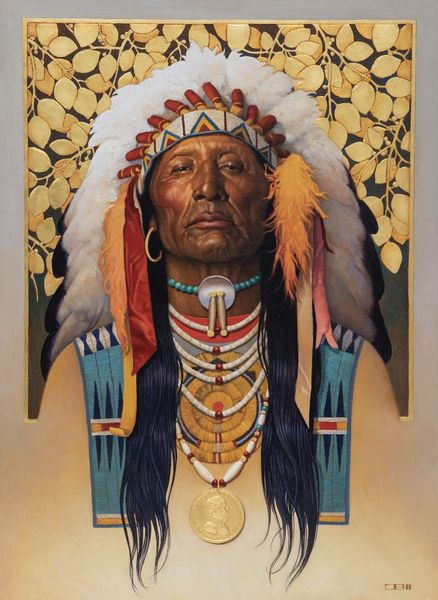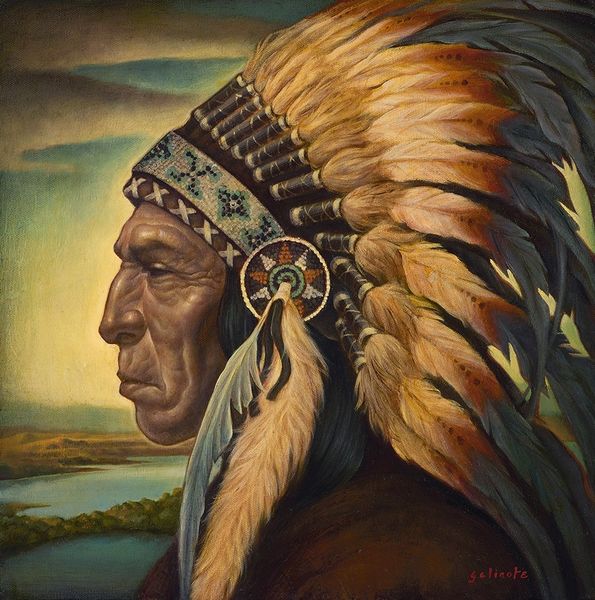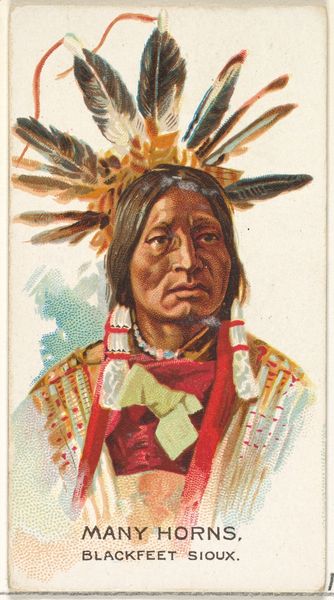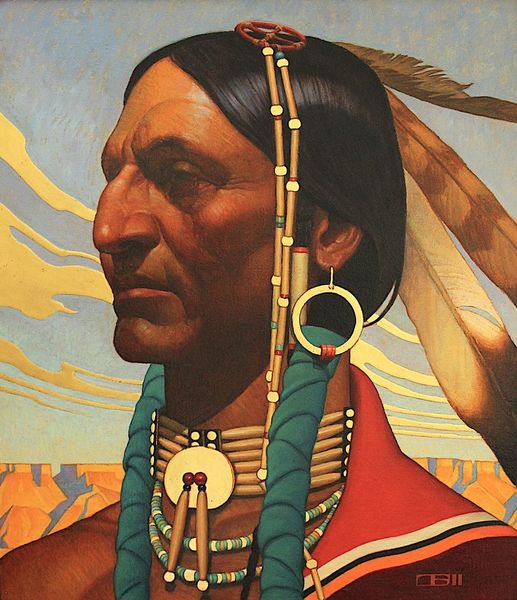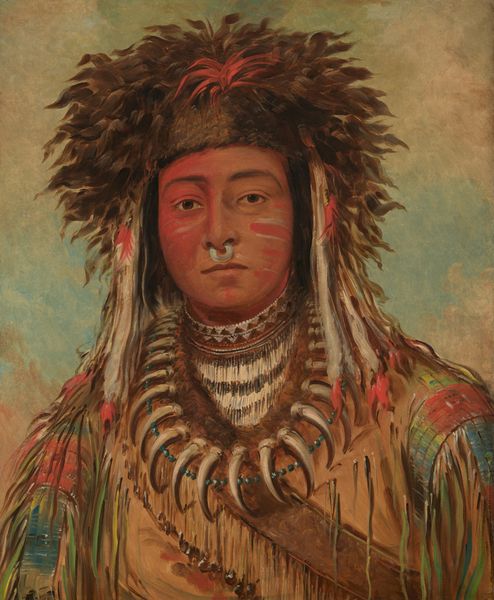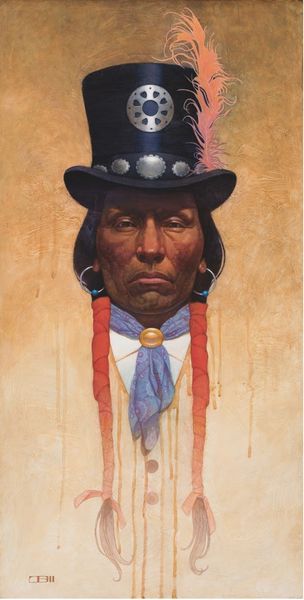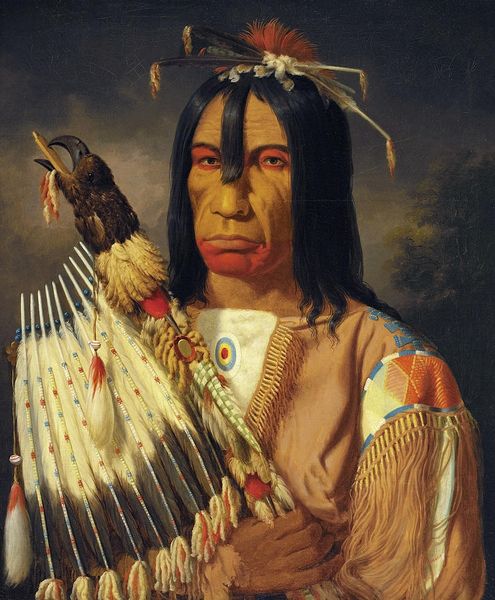
painting, oil-paint
#
portrait
#
painting
#
oil-paint
#
oil painting
#
portrait reference
#
romanticism
#
portrait art
Copyright: Public domain
George Catlin painted See-non-ty-a, an Iowa Medicine Man, sometime in the first half of the 19th century. Catlin saw himself as recording the likenesses and customs of Native Americans before their cultures were destroyed. Notice the man's distinctive headdress and ornamentation, which signify his status and role within his community. Catlin’s paintings are significant historical records, but they are also products of their time. They reflect the complex and often fraught relationship between the United States and Native American tribes during a period of westward expansion and displacement. Catlin's work was displayed in galleries and museums and sold to a public eager for images of the American West, and for documentation of Indigenous peoples. This interest, however, was interwoven with colonialist attitudes. We can research Catlin's original notes and journals and read recent scholarship to understand this painting within its full historical and cultural context. This approach allows us to appreciate the painting's artistic qualities while also critically examining its historical and social implications.
Comments
No comments
Be the first to comment and join the conversation on the ultimate creative platform.
